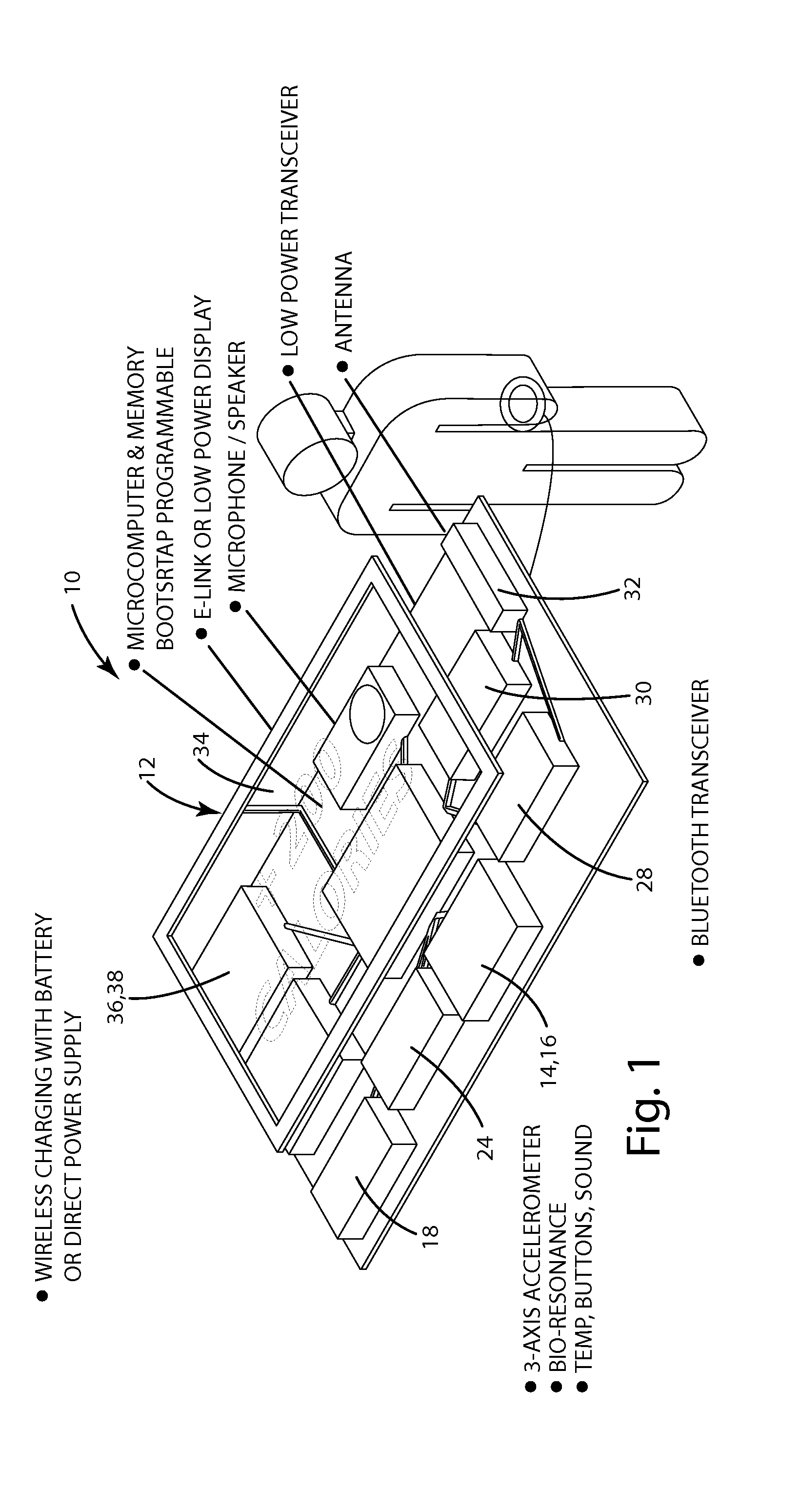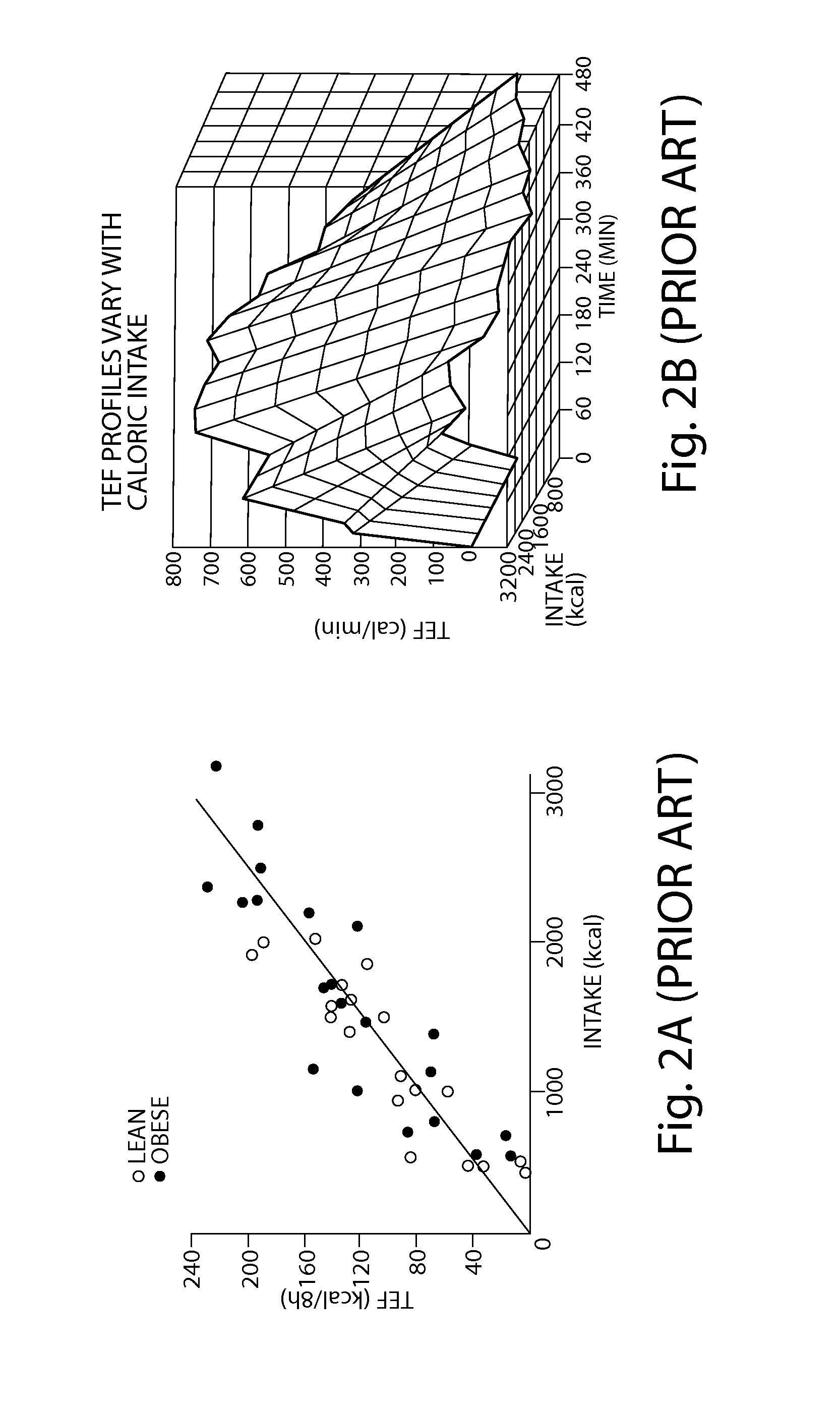System and method of approximating caloric energy intake and/or macronutrient composition
a macronutrient composition and caloric energy intake technology, applied in the field of automatic systems and methods, can solve the problems of time-consuming for users to manually enter food consumption information, difficult for typical users, and problems such as conventional systems, to achieve the effect of improving the accuracy of caloric energy intake and/or macronutrient composition approximations, simple and effective systems and methods, and improving the accuracy of approximation
- Summary
- Abstract
- Description
- Claims
- Application Information
AI Technical Summary
Benefits of technology
Problems solved by technology
Method used
Image
Examples
Embodiment Construction
A. Overview
[0030]A system 10 for approximating caloric energy intake and / or macronutrient composition of consumed food is shown in FIG. 1. In this embodiment, the system is implemented in a device 12 that may be worn by a user. The device 12 of FIG. 1 is configured to tracks caloric intake of a user by measuring and normalizing body temperature throughout a day and, in this embodiment, specifically before and after a meal. The device 12 of FIG. 1 includes an ambient temperature sensor 14, body temperature sensor 16 and motion sensor 18. Each one of these sensors may be a single sensor or a plurality of sensors. For example, body temperature may be tracked using readings collected from a plurality of different temperature sensors 16 located at different locations on the body. As another example, the motion sensor 18 may include different types of motion sensors, such as a three-axis accelerometer, a pedometer, a gyroscope and a magnetometer. The device 10 may include additional senso...
PUM
| Property | Measurement | Unit |
|---|---|---|
| body temperature | aaaaa | aaaaa |
| body temperature | aaaaa | aaaaa |
| caloric energy intake | aaaaa | aaaaa |
Abstract
Description
Claims
Application Information
 Login to View More
Login to View More - R&D
- Intellectual Property
- Life Sciences
- Materials
- Tech Scout
- Unparalleled Data Quality
- Higher Quality Content
- 60% Fewer Hallucinations
Browse by: Latest US Patents, China's latest patents, Technical Efficacy Thesaurus, Application Domain, Technology Topic, Popular Technical Reports.
© 2025 PatSnap. All rights reserved.Legal|Privacy policy|Modern Slavery Act Transparency Statement|Sitemap|About US| Contact US: help@patsnap.com



